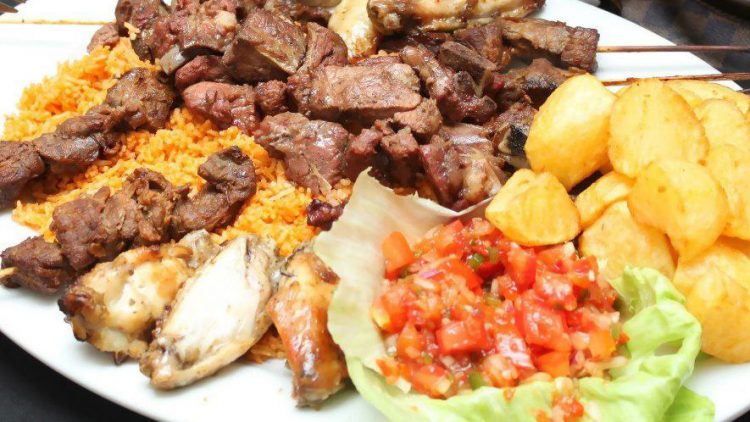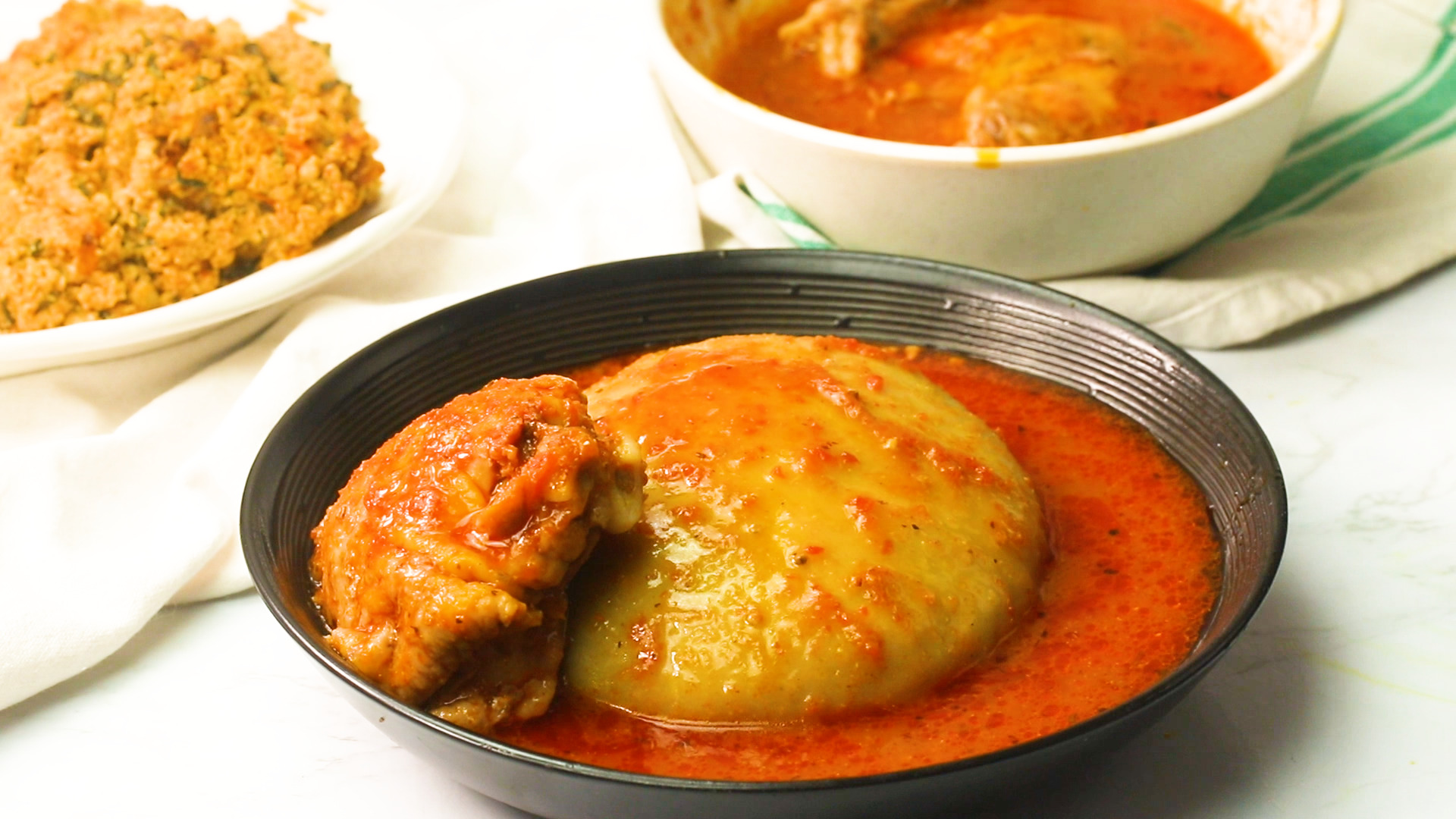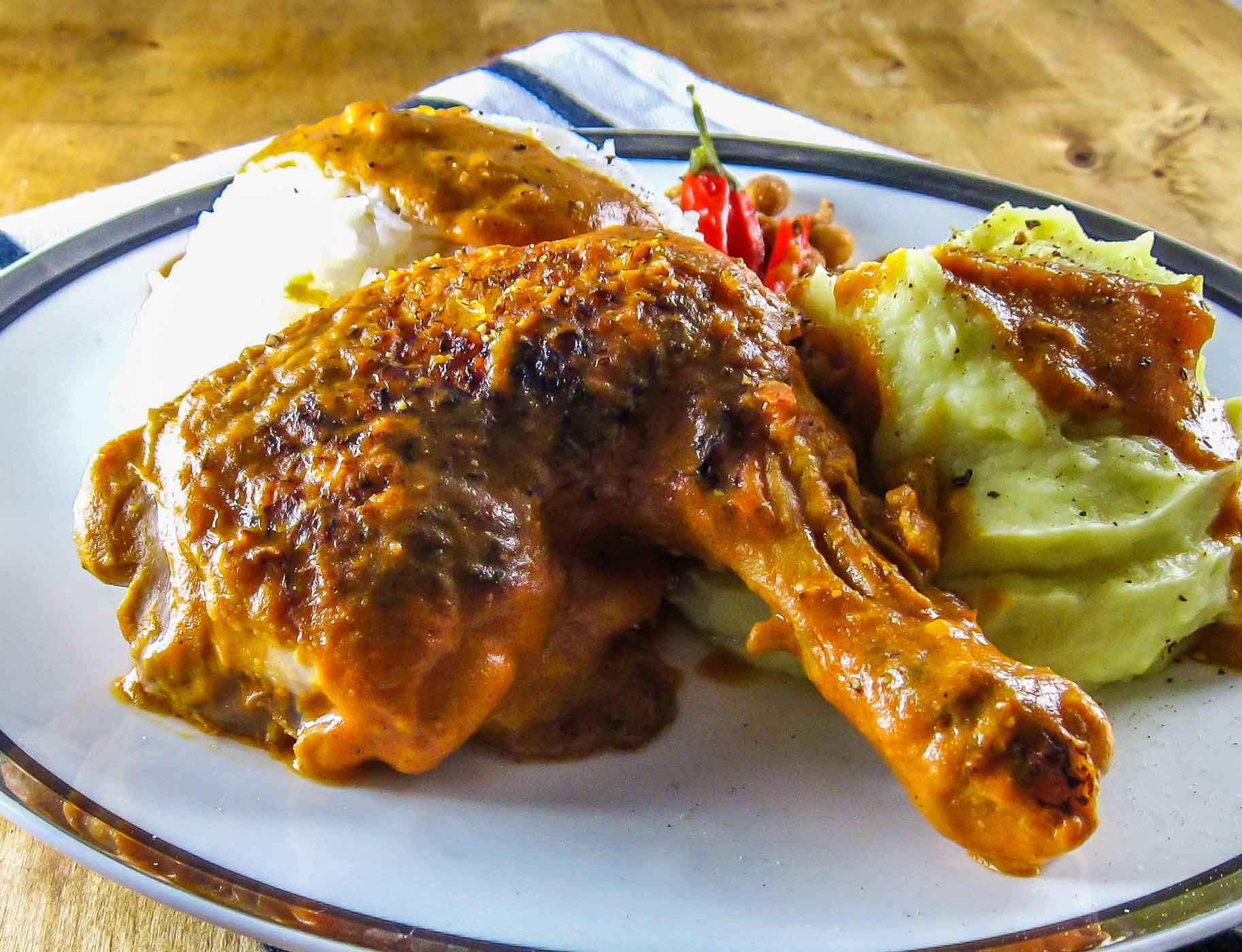Discover Congolese Cuisine: A Journey Through DR Congo's Famous Foods

Congolese cuisine offers a rich tapestry of flavours, merging local produce, traditional cooking techniques, and influences from European, Arab, and African cuisines into simple yet deeply satisfying dishes. Predominantly, Congolese rely on conventional foods, driven by the limited cultivation of land, with less than two per cent farmed chiefly for subsistence.
The fertile lands of Congo yield diverse crops like maize, rice, cassava, sweet potatoes, yam, taro, plantain, tomatoes, pumpkins, and various peas and nuts, forming the backbone of national and regional dishes. Coffee and palm oil stand out as significant agricultural contributions among its exports.
Staple Ingredients
The backbone of Congolese cuisine lies in its staple ingredients, which include:
- Cassava and Plantains: These are used in various forms, such as boiled, fried, or ground into flour.
- Maise and Rice: Commonly served as side dishes or principal components of meals.
- Beans and Peanuts: Essential sources of protein, often used in stews and sauces.
- Leafy Greens: Including spinach, kale, and cassava leaves, known locally as ponds.
Must-Try Traditional Dishes
Pondu

Pondu, or cassava leaves stew, is a beloved dish across DR Congo. It's a rich, green stew made from pounded cassava leaves, often cooked with palm oil, fish, and sometimes meat. The dish is a nutritional powerhouse, served alongside fufu or rice.
Fufu

Fufu is a staple food across many African countries, including DR Congo. It's a dough-like consistency food made by boiling starchy crops like cassava or plantains and then pounding them into a smooth, sticky mass. Fufu acts as a vehicle for soups and stews, allowing diners to scoop up savoury sauces without needing utensils.
Saka Saka
Saka is another name for cassava leaf stew, similar to Pondu, but often includes coconut milk and peanut paste, giving it a distinctive flavour profile. It's a testament to the versatility of cassava leaves in Congolese cuisine.
Moambe Chicken (Chicken Stew)

Moambe Chicken is a celebratory dish often reserved for special occasions, a savoury stew with chicken simmered in a tomato and palm oil sauce. Its complex flavours, enhanced by nutmeg and peanut butter, reflect the layered influences of foreign interactions, notably the Portuguese introduction of palm oil to Africa.
Makayabu (Dried Fish)
Small, dried fish that are a typical snack or addition to soups and stews, Makayabu exemplify the resourcefulness of Congolese cuisine in preserving and utilising available seafood.
Chikwanga (Cassava Bread)
A form of bread prepared from cassava flour and steamed in banana leaves, Chikwanga is a beloved side dish, demonstrating the versatility of cassava in Congolese cooking.
Saka-Saka (Pounded Cassava): A dish composed of pounded cassava leaves and peanuts, Saka-Saka is a testament to the agricultural ingenuity of the Congolese people, offering a rich blend of textures and flavours.
Beignets (Donuts)

Sweet, fried doughnuts have become a beloved treat in the DRC. Beignets represent the fusion of French culinary techniques with Congolese ingredients, and they are enjoyed widely across the country.
Madesu (Beans with Tomato Sauce)
A hearty dish featuring cannellini beans in a spicy tomato sauce, Madesu illustrates the adaptability of Congolese cuisine. It offers a plant-based option enriched with meat for added flavour.
Pili Pili

Pili Pili, a fiery hot sauce made predominantly from scotch bonnet peppers, is a versatile condiment that can elevate any meal. It embodies the bold and spirited nature of Congolese cuisine.
Street Foods: A Taste of Congo on the Go
Street food in DR Congo offers a glimpse into the everyday culinary practices of its people. From grilled meat skewers known as "brochettes" to "beignets" (African doughnuts), the streets are alive with flavours. Not to be missed is "Liboke," a traditional dish where fish or meat is seasoned with spices and wrapped in banana leaves, then slowly cooked over a grill or open fire.
Desserts and Sweets: The Sweet Side of Congo
While not traditionally known for its desserts, DR Congo offers sweets like "Mikate" (Congolese beignets) and various fruits such as mangoes, papayas, and pineapples, often enjoyed fresh or juiced.
Beverages: Traditional Drinks to Quench Your Thirst
From the sweet, fermented maise drink "Makasi" to the palm wine "Malafu," traditional beverages in DR Congo are as diverse as its food. Tea and coffee, reflecting the country's colonial history, are also popular, often enjoyed with a sweet or savoury snack.
What are the top restaurants in the Democratic Republic of the Congo?
Discover the Democratic Republic of the Congo's culinary gems, where flavour meets culture in extraordinary settings. Here's where to dine and dazzle:
- Limoncello: Imagine a peaceful haven in the heart of Kinshasa's lively streets. This place is famous for its mouth-watering pasta and pizza, plus you'll love how everyone speaks English! It's the warm welcome that truly makes it unique.
- A Casa Mia: This spot brings Italian elegance to the Gombe district. The vibe is all class, though the food gets mixed reviews. It's the perfect place for those who value the atmosphere just as much as the meal.
- O’Poeta: This restaurant is a hit in the bustling business district for its tasty yet affordable pizza and chicken and its top-notch service. It's the kind of place that makes you feel right at home.
- ASK Tabuinhas: Sunday funday? This spot has an excellent Sunday buffet in Ma Campagne, Ngaliema. It's a weekend must-visit for delicious eats in a friendly atmosphere.
- Lac Kivu Lodge: Set by the stunning Lake Kivu, this lodge offers a diverse menu with views that'll take your breath away. It's a tourist favourite for a reason – the scenery is as good as the food.
These dining hotspots in the Democratic Republic of the Congo offer unforgettable meals and experiences, blending incredible tastes with unique atmospheres.
Conclusion
The Democratic Republic of the Congo is a land rich in culinary traditions, offering a feast for the senses to those willing to explore its flavours. From hearty stews and savoury street food to sweet treats and refreshing beverages, Congolese cuisine reflects the country's history, culture, and the bounty of its land. Whether you're a seasoned foodie or a curious traveller, the culinary landscape of DR Congo promises an unforgettable journey through taste.
FAQS
- How does Congolese cuisine differ from other African cuisines?
Congolese cuisine is distinct for using cassava and plantains as staples and in unique preparations like Pondu. It blends local traditions with influences from Arab and European cuisines, making it diverse in flavours and techniques.
- Are there vegetarian options in Congolese cuisine?
Yes, vegetarian options such as Pondu (cassava leaves stew), vegetable stews, and dishes made with beans and legumes offer ample choices for vegetarians.
- How do traditional Congolese meals incorporate local fruits and vegetables?
Traditional meals often include side dishes of boiled or fried plantains, cassava, and maize. Fruits like mangoes, papayas, and pineapples are commonly eaten fresh or made into juices.
- What snacks are popular in the Congo?
Minkati (cassava doughnuts), peanuts, fruit, caterpillars, and flying ants.
- What is a typical breakfast, lunch, and dinner in DR Congo?
- Breakfast: Light, often consisting of bread with tea or coffee.
- Lunch: Heavier, possibly including dishes like Fufu with Pondu or grilled fish.
- Dinner: Similar to lunch, with various stews, meats, and side dishes, emphasising communal eating.
- How has DR Congo's history influenced its food culture?
DR Congo's food culture is influenced by its trade history, colonisation, and interaction with neighbouring countries. This has introduced ingredients like maise and techniques such as frying from outside cultures, blending them with traditional African culinary practices to create its diverse cuisine.